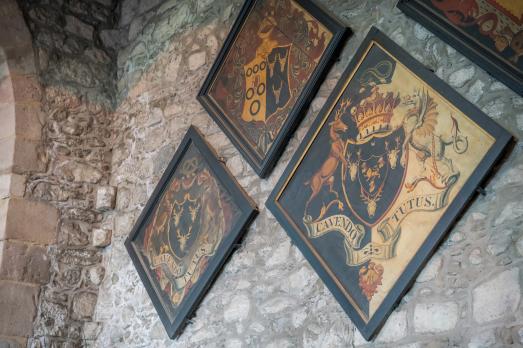It was founded as a priory for Augustinian canons in around 1189 and also served as a parish church, which saved it from outright destruction during the Dissolution of the Monasteries in the 1530s. The priory was dissolved, and four of the monks were hanged along with ten villagers who had supported them, but the church survived as did the precinct gatehouse, though other domestic structures were destroyed.
The church was built during changing times in monastic architecture, and three distinct periods of architecture can be seen: Transitional Norman (1190 to 1250), Decorated (1320 to 50) and Perpendicular (1400 to 50). The oldest parts of the priory are the chancel, transepts, the south doorway and part of the north wall of the nave, where you can see the plain and massive arches that are characteristic of the period.
The transepts also contain two blocked up doorways, one of which once connected with the monks' dormitory. The huge east window, nearly filling the east wall, is from the Perpendicular period, and some sections hold fragments of medieval glass rescued from earlier works. The south porch has the oldest glass, which dates from the 14th century and depicts angels. There is also some stunning Victorian glass, with rich colours and beautifully detailed drawing. From the mid 15th century, the priory also possesses an excellent set of 26 choir stalls, each with a delightful misericord, or bench. They are of exceptional quality and bear many carvings of animals, including a unicorn, mermaid, ape and peacock, as well as a Green Man. In 1618'22, new stall backs were erected, boasting very fine openwork panels and slender columns topped with ornate capitals and covered in twining vines.
Other features to note include the Piper Choir, with its early English pointed arch and groined roof, and the Town Choir, which is dedicated to St Michael and was set aside by the canons for the lay people of Cartmel. Then there are the bullet holes still visible in the southwest door of the nave. These are leftovers from the 1640s, when Roundhead troops stayed in the village, stabling their horses in the church.
The priory was put to yet more unholy uses: after the Dissolution it served as a prison and, between 1624 and 1790, as a grammar school.



























